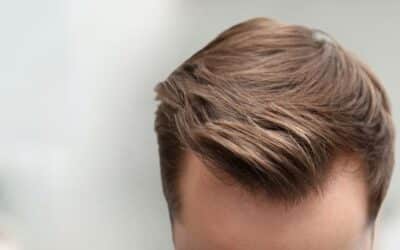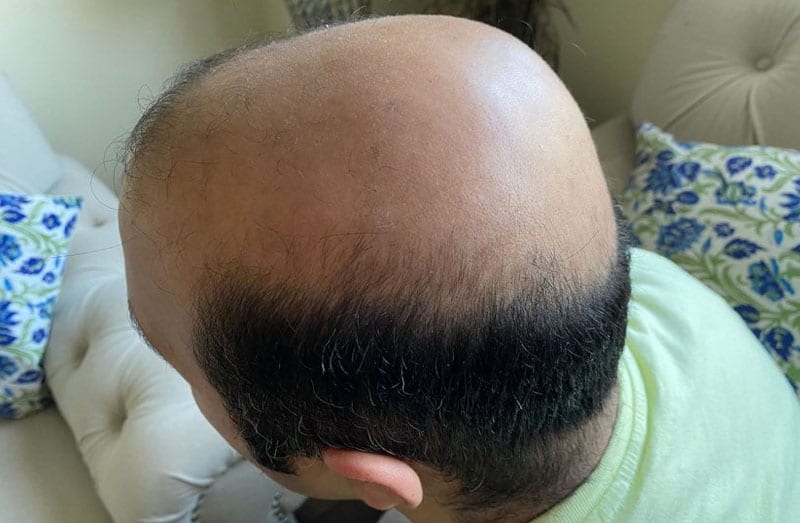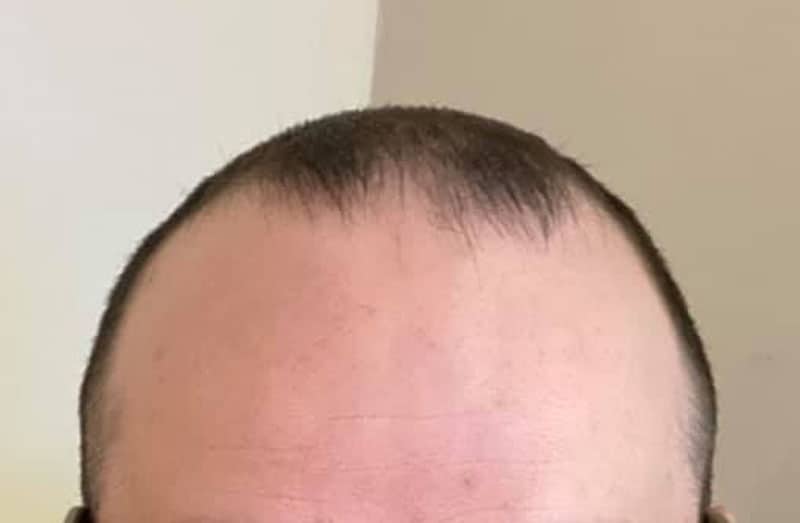Are you looking for a permanent solution to hair loss? Hair transplants can be an effective way of restoring your front hairline or back crown. Before opting for a hair transplant, it is essential to be aware of the criteria needed from donors and any restrictions that may impede some individuals from obtaining desired results. In this blog post we will discuss the ins-and-outs of both front hairline and back crown transplants so that you can make an informed decision about which option might work best for you.
Table of Contents:
- Front Hairline Transplants
- Back Crown Transplants
- Donor Hair Requirements for Hair Restoration Procedures
- Limitations of Hair Restoration Procedures
- FAQs in Relation to Front Hairline or Back Crown
- Conclusion
Front Hairline Transplants
A front hairline transplant is a surgical procedure that can help restore the appearance of a receding hairline. Grafting of hair taken from other regions on the scalp is used to bolster the front part of the head in a front hairline transplant. This type of procedure is beneficial for those who are experiencing balding or thinning in this area, as it can create a more natural-looking result.
Who Is A Good Candidate For A Front Hairline Transplant? The ideal candidate for this type of procedure will have good overall health, sufficient donor hair available, and realistic expectations about results. Those with certain medical conditions such as diabetes or autoimmune disorders may not be suitable candidates due to increased risk factors associated with surgery.
What Are The Benefits Of A Front Hairline Transplant? One benefit of undergoing a front hairline transplant is improved self-confidence and an enhanced sense of well-being by restoring one’s youthful look. Additionally, this procedure offers long lasting results when compared to other non-surgical treatments such as medications or topical solutions which often require ongoing use in order to maintain any benefits achieved.
Following the procedure, aftercare instructions will be provided which typically includes avoiding activities that cause excessive perspiration or strain on newly grafted hairs while they heal over time. As healing progresses, new hairs should start growing within 6 months post-surgery and continue to grow normally thereafter providing permanent coverage across your forehead area giving you back your youthful appearance once again.
Front hairline restoration offers a means to revive one’s natural locks and decrease the presence of baldness. For those looking for an even more comprehensive approach, back crown transplants may be worth considering.
Back Crown Transplants
A back crown transplant is a procedure that can help restore the appearance of baldness or thinning in the back crown area of the scalp. It involves taking donor hair from other areas of the scalp and transplanting it to this area, creating a more natural-looking result. This procedure can be beneficial for those who are experiencing balding or thinning in this area, as it can help to create a fuller, thicker look.
Who is a good candidate for a back crown transplant? The best candidates for this type of procedure are people with moderate to severe hair loss in their midscalp and/or crown regions. People who have had previous unsuccessful attempts at restoring their hair through medications such as Rogaine may also benefit from this procedure. Additionally, anyone whose scalp has adequate donor hairs (in order to provide enough grafts) should consider having a back crown transplant done.
What are the benefits of getting a back crown transplant? A major benefit is that you will get natural looking results that last over time – unlike many topical treatments like Rogaine which must be used on an ongoing basis if desired results are going to be maintained. Additionally, since your own existing hair follicles will be transplanted into your scalp during the procedure there won’t be any need for further maintenance after you’ve healed up from surgery; once it grows out you simply style it however you want. Lastly, because these procedures use only your own existing hairs they don’t carry any risk associated with allergic reactions or foreign substances being introduced into your body – making them much safer than some other types of medical treatments available today.
What is the procedure for getting a back crown transplant? Generally speaking, most surgeons begin by harvesting healthy donor hairs from another part of your head (usually near where they plan on performing the actual implantation). Once enough healthy follicles have been harvested they will then carefully insert them into tiny incisions made in your recipient site using special tools designed specifically for this purpose – ensuring each one goes exactly where intended so no unnatural looking patches occur post-surgery. Finally after all grafts have been inserted properly healing begins and within 6 months new growth should start appearing around these sites giving you an even fuller head full look.
Finally, after all grafts have been inserted properly, healing begins and within 6 months new growth should start appearing around these sites giving you an even fuller head of hair look.
Back crown transplants can provide a permanent solution for those suffering from hair loss, restoring the fullness of their head and giving them back confidence in their appearance. Prior to opting for a hair restoration process, the necessity of donor locks should be taken into account since it will affect the efficacy of outcomes.
Donor Hair Requirements for Hair Restoration Procedures
Donor hair is an essential part of successful hair restoration procedures, such as front hairline and back crown transplants. The donor hair must come from healthy follicles on other parts of the scalp that meet certain criteria in order to be suitable for use in these procedures. FUE and FUT are two different kinds of donor hair available for use in hair restoration treatments like front hairlines and back crown transplants.
FUE involves removing individual follicles one by one from the donor area, usually at the back or sides of the head. This method is often preferred because it leaves minimal scarring and allows for a more natural-looking result. Yet, due to its laboriousness and the need for numerous treatments to accomplish desired outcomes, it can be a prolonged process.
FUT involves taking a strip of skin with intact hairs from an area where there is thicker growth, such as at the back or sides of the head. This strip is then divided into individual grafts which are placed into tiny incisions made in areas needing coverage. While this method can provide good results quickly, it does leave a linear scar along the donor site that may not always be hidden under existing hair.
It is important to understand the donor hair requirements for a successful hair restoration procedure. Now is the moment to evaluate the restrictions and any connected hazards or consequences of these treatments.
Limitations of Hair Restoration Procedures
Hair regrowth treatments can be a viable solution for hair thinning, yet there are certain restrictions that ought to be thought of before undergoing the procedure. Advanced baldness or other medical conditions can make a person unsuitable for hair restoration procedures, potentially leading to unsatisfactory results. Before committing to a hair restoration procedure, one should consider the potential risks and side effects such as scarring or infection at the donor site or recipient area.
To ensure the durability of outcomes, it is essential to be aware of the upkeep necessary following a hair restoration process, taking into account individual factors such as age, wellbeing and lifestyle practices like smoking and drinking. Generally speaking, those who have had successful transplants can anticipate their new hairline lasting from several months up to a few years provided they take good care of their scalp post-treatment. Keywords: Active Voice; Idioms; Colloquialisms; Hair Restoration Procedure; Maintenance Required; Longevity of Results
Potential patients ought to bear in mind that, even if a great many grafts are used during the procedure, there could still be some sparse regions where extra treatment may be required for them to get their desired outcome. Consequently, it is critical for individuals evaluating this kind of operation to be aware of all the potential benefits and drawbacks before making a decision about its suitability.
FAQs in Relation to Front Hairline or Back Crown
What hairline is most attractive?
The most attractive hairline depends on the individual’s facial structure and aesthetic preferences. A pleasing hairline tends to be one that is gentle and organic-looking, conforming with the facial features for a unified look. The goal should always be to create a look that is balanced and in harmony with other features of the face for a harmonious overall appearance.
Where should your natural hairline be?
The hairline should be situated just above the brow’s topmost point, with a soft arc sweeping to both temples. It should not extend too far back on either side or have any sharp angles. Ideally, the hairline should be as balanced and natural-looking as possible for an attractive appearance.
What is the most attractive hairline for men?
The most attractive hairline for men is one that looks natural and follows the shape of their face. It should be slightly receded at the temples, while still maintaining a fullness in the middle to frame the face. The hairline should not look too straight or uniform, as this can appear artificial and unattractive. Furthermore, it should have soft edges that blend into existing hair rather than creating an abrupt line between balding areas and remaining hairs.
Can you have thinning at the crown but not hairline?
Yes, it is possible to have thinning at the crown without hairline loss. A general thinning across the scalp, known as ‘diffuse alopecia’, can occur instead of hairline loss at the crown. Diffuse alopecia may be due to diverse sources, such as endocrine imbalances, drugs, strain or heredity. Hair transplantation can help restore lost volume on top of the head while also preserving existing healthy hairs around the sides and back for natural-looking results.
Conclusion
For those looking for a permanent solution to hair loss, the front hairline or back crown can be restored with a successful hair transplant. Depending on your individual situation, donor requirements may vary and there are some limitations that could affect the outcome of these procedures. However, in most cases a skilled surgeon will be able to provide you with natural-looking results and restore confidence in yourself again.
If you’re looking for a solution to your hair loss issues, look no further than the best hair transplant and restoration procedures available. Our team of experienced professionals can help restore your confidence with our state-of-the-art techniques.
Best Hair Transplant
1970 S. Prospect Ave., Suite 2
Redondo Beach, CA 90277
(213) 403-0455
https://www.google.com/maps?cid=9280610872186794918












